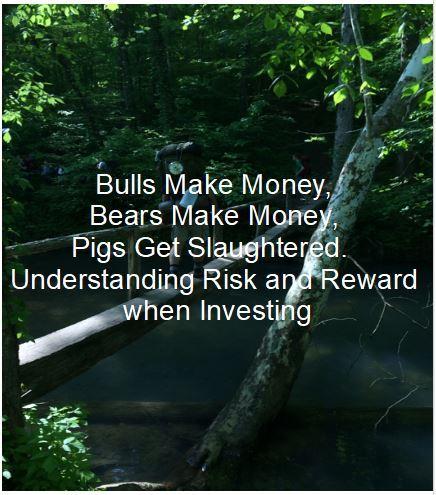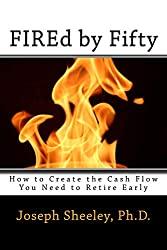
An important concept to understand in investing is risk and return, often expressed as a
risk/reward ratio. The basic idea is that the risk/reward ratio should be about the same for any investment. If an investor is taking more risk, he should expect to have the chance to get a greater return on his investment.
(Note, this site contains affiliate links. As an Amazon Associate I earn from qualifying purchases. When you click on an affiliate link and buy something, The Small Investor will get a small commission for the referral. You are charged nothing extra for the purchase. This helps keep The Small Investor going and free. I don’t recommend any products I do not fully support. If you would like to help but don’t see anything you need, feel free to visit Amazon through this link and buy whatever you wish. The Small Investor will get a small commission when you do, again at no cost to you.)

For example, a bank account is a fairly risk-free investment. Because losses in banks is
very rare — even rarer since the Government began insuring bank accounts and requiring that banks hold a certain amount of capital in reserve — the amount of return from a bank account is fairly low.
Bank investors do not expect a large return from their bank accounts as long as they can reasonably expect to be able to get the money back when they need it. The return is actually a little worse than
inflation in fact, so wise investors only keep as much in savings accounts as they may need in the near future.
Investing in common stocks carries a bit more risk. There is always a chance that a
company’s business strategy may not work, or that someone in a company may make a big mistake, or that the company will get sued, causing a large loss. Even if nothing big happens, company earnings
may not grow as expected and the share price may stagnate, resulting
in an opportunity cost — money invested in a company that goes nowhere instead of another stock that grows. For these reasons investors will not put money into stocks unless there is an
opportunity to make significantly better returns than in a bank account. Because stocks have historically had better returns than bank accounts, investors have continued to put money into stocks.

(If you enjoy The Small Investor and want to support the cause, or you just want to learn how to become financially independent, please consider picking up a copy of my new book, FIREd by Fifty: How to Create the Cash Flow You Need to Retire Early This is the instruction manual on how to become financially independent.)
The risk/reward ratio for different investments tends to be nearly constant. For example, if the risk of investing in a bank account is 1 (some arbitrary unit), and it’s return is 2%, such that the risk/reward ratio is 1/2 = 0.5, then if a common stock investment is five times as risky as the bank account, one should not
invest in the stock unless the potential rate of return is at least five times as much. The risk/reward ratio would then be 5/10 = 0.5.
The pricing of common stocks tends to reflect this. If bank account yields increase, the
price of common stocks would tend to fall. Because the return from a bank account is now higher, the potential return from common stocks must also be greater, so investors bid down the price until the ratio
of the current price to the expected price in the near future is sufficient to account for the risk.

Want all the details on using Investing to grow financially Independent? Try The SmallIvy Book of Investing
When choosing whether or not to make an investment, the potential reward should be taken into
account. This is the reason to avoid day trading. In day trading, investors buy stocks for short periods of time, often selling if very small gains (1/8 point or less) are made. The chance of a trade
going the investor’s way over a short period of time, however, is about 50-50, so the chance of losing money is equal to the chance of
making money.
Since the potential gains are very small, because positions are closed when small gains
are made, the rewards are very limited. The risks are substantially greater than investing in a bank account, however. Therefore, the risk/reward ratio of day trading is not sufficient. Over time, one would do much better just leaving his money in the bank.

The strategy that I call serious investing – investing in carefully selected common stocks
and holding for long periods of time–certainly carries more risk than investing in a bank account. Risk is reduced, however, by the careful selection of stocks (companies that have successful business
models and should be expected to continue to grow) and the long-term horizon (so that the effects of market distortions do not matter). In addition, the profit potential is substantial. Long term
investments of a few thousand dollars have turned into millions of dollars for companies such as Microsoft and Walmart. For this reason, the risk/reward ratio is very favorable.
Have a burning investing question you’d like answered? Please send to [email protected] or leave in a comment.
Disclaimer: This blog is not meant to give financial planning or tax advice. It gives general information on investment strategy, picking stocks, and generally managing money to build wealth. It is not a solicitation to buy or sell stocks or any security. Financial planning advice should be sought from a certified financial planner, which the author is not. Tax advice should be sought from a CPA. All investments involve risk and the reader as urged to consider risks carefully and seek the advice of experts if needed before investing.
